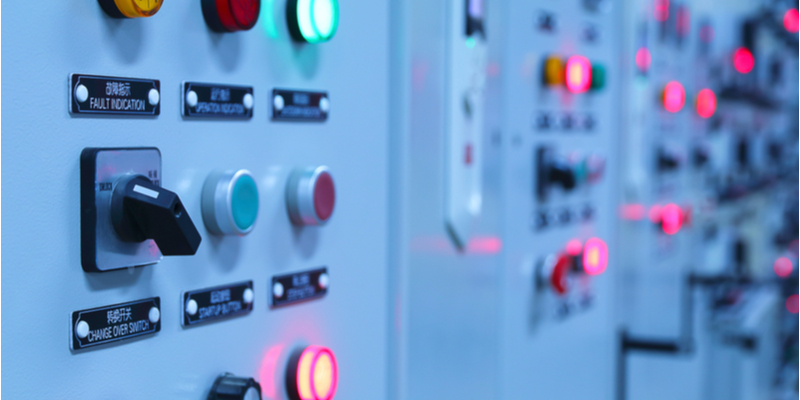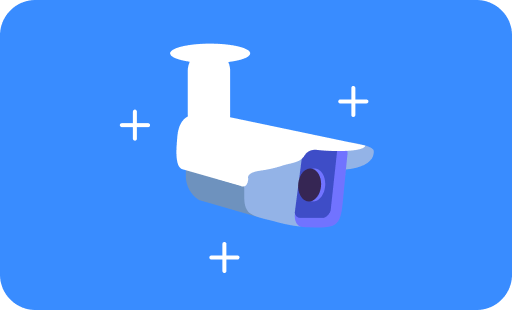The top 3 physical security considerations for manufacturing plants
- Featured Post
- Physical security
- Security for businesses

 Kathee Mattern is one of Calipsa’s US Account Managers, and has many years’ experience managing the physical security of manufacturing plants. In this article, she shares her expertise, explaining the key security considerations for any well-run factory or industrial plant.
Kathee Mattern is one of Calipsa’s US Account Managers, and has many years’ experience managing the physical security of manufacturing plants. In this article, she shares her expertise, explaining the key security considerations for any well-run factory or industrial plant.
In my years managing the security needs of manufacturing plants, video surveillance has always been essential. Whether security is managed by dedicated professionals, by security guards or by operational management, video monitoring is an easy way to make sure factories are run more efficiently and securely. Security cameras help in three key areas: health and safety, inventory management, and in aiding security staff.
Want to know the secret to better security? Download our free ebook.
1. Manufacturing plant health and safety
Manufacturing has a comparatively high number of workplace accidents. In a plant, health and safety is as important a consideration as general security, so security cameras are imperative.
Industrial plants use cameras to manage and mitigate their liability; not only does this help with their insurance premiums, it also ensures they comply with OSHA regulations. Manufacturing sees a lot of employee claims related to workplace accidents. Having cameras around the facility enables you to monitor the day-to-day operations and check that safety regulations are being followed.
Cameras can also mitigate dangerous and costly damage to equipment, by monitoring conveyor lines. Using cameras to monitor consistency and look out for any anomalies can prevent an incident, as a variation could break equipment and potentially harm employees. Products such as steel rods or bottles require uniformity to go through all the processing equipment smoothly, and cameras can help to make sure that this happens without any problems.
Not only can cameras record incidents, they can also help to prevent them. Some industrial facilities carry out dangerous activities, such as melting metals. Working with fire and / or combustible materials is a very high-risk activity, with strict rules around how these workplaces should be run for the safety of their employees.
Security cameras can proactively stop risky situations from happening with the help of intelligent video analytics. If activity occurs in an area that is off limits to staff, zone detection technology can pick up on this and raise an alert. The activity on the camera in question can then be checked, and if people are in a prohibited area, action can be taken immediately to ensure their safety.
Video analytics can help with other aspects of health and safety too - for example, intelligent colour detection would be useful to make sure people are wearing yellow vests. Since analytics are good at spotting any anomalies or variations, missing safety equipment is quicker and easier to spot. This also applies to conveyor lines, where analytics can help staff to spot anything unusual that could eventually lead to a dangerous situation.
Discover how Calipsa's video analytics could help improve your manufacturing plant's physical security and safety:
2. Inventory management in industrial plants
Cameras are also essential for inventory control. Raw materials such as steel, chemicals and lumber are of high value, and with current shortages, they are even more in demand. A lot of the tools and equipment we use are also expensive. If any of these things go missing, they cost a lot of money to replace, so guarding storage areas with cameras helps to keep an eye on things and to deter thieves.
Industrial facilities must be especially vigilant about guarding their stock and equipment. Unfortunately, this also means guarding against their own employees. Occasionally employees steal materials or tools to sell them on. In these cases, cameras can help security staff identify who is abusing their ability to access otherwise secure areas. Knowing that cameras are in operation should also deter members of staff from attempting to steal.
Manufacturing plants are hives of activity and it can be difficult to keep track of shipments coming in and out. This is especially true of trucks - and docking stations where trucks load and unload cargo are especially vulnerable to cargo theft. Stolen shipments can land staff in trouble if they have signed off on a delivery but the valuable goods are in fact missing. Having cameras installed at these points helps security and operations staff to keep track of shipments in and out of the plant.
Nonetheless, security staff are very busy, so analytics are really useful as an extra pair of eyes. Analytics software like Calipsa can quickly and accurately identify both people and vehicles. Staff receive alerts if a truck arrives in a bay, or if people are spotted in material storage areas - which means they don’t have to spend all day watching camera feeds or worrying they’ll miss something if they step away from their desk. As we’ll see in the next section, a tool that can help security and/or operations staff to stay informed and do their jobs better makes a massive impact.
3. Helping factory security staff to do their job
While manufacturing technology helps many industrial processes to run automatically, people are still needed to make sure everything is running smoothly. Cameras set up with a people counting function can assess whether there are enough people present to monitor the various activities taking place across a large site, from manning machinery to being on hand when a truck arrives to make a delivery.
Manufacturing operations and security staff are rarely just employed to monitor cameras; they often have to multitask. Having a people count alert enables security staff to check the cameras rather than physically doing a tour of the plant. A simple tannoy update is then all that’s needed to get employees to cover any empty areas.
Security and operations staff often watch camera feeds whilst doing other activities, so anything that makes multitasking easier is a bonus. Analytics-based alerts allow them to monitor camera feeds less frequently, so they can focus better on other tasks and consult the cameras as needed.
Operations managers use cameras to monitor processes as well as safety and security. In fact, cameras provide really helpful information on points of training or ways to streamline. For example, if an Ops Manager is watching vehicle mechanics on a production line, they might spot how they could improve manufacturing processes to make them quicker or safer.
Security cameras are a cheap and flexible addition to the manufacturing security toolkit. They help staff to monitor an entire site remotely, and can be used to monitor health and safety as well as physical security. When they are enhanced with analytics, video monitoring is made quicker and more effective. Any time or liability saved is always money saved - so an investment in video monitoring is sure to pay dividends over time.
Want to know more about how video analytics can help manufacturing plants? Take a look at what we can do for critical infrastructure. Or, see Calipsa in action in our demo video:









No comments